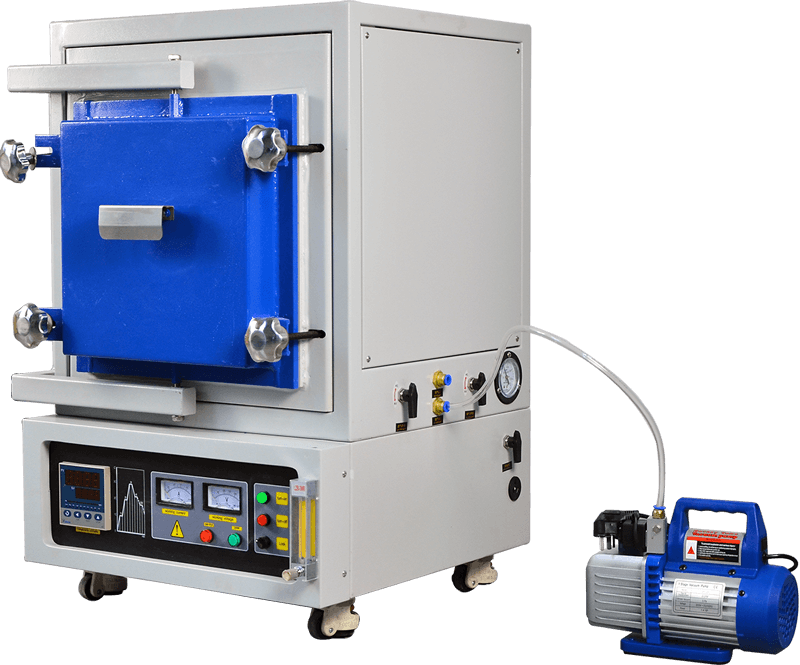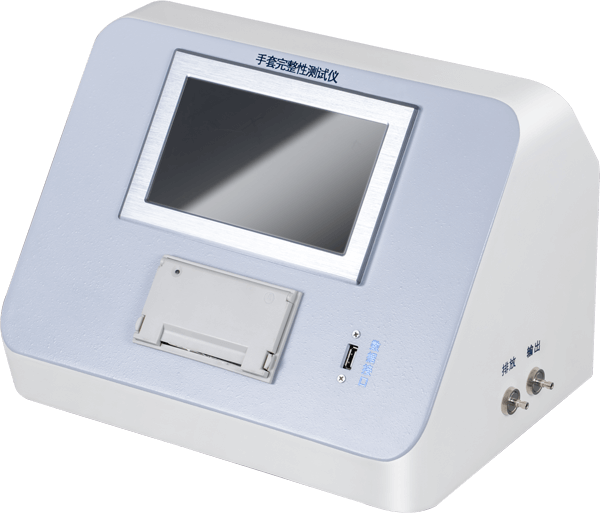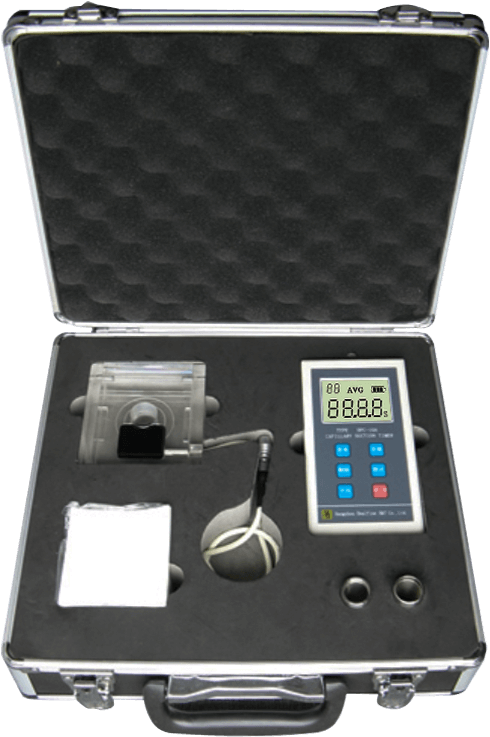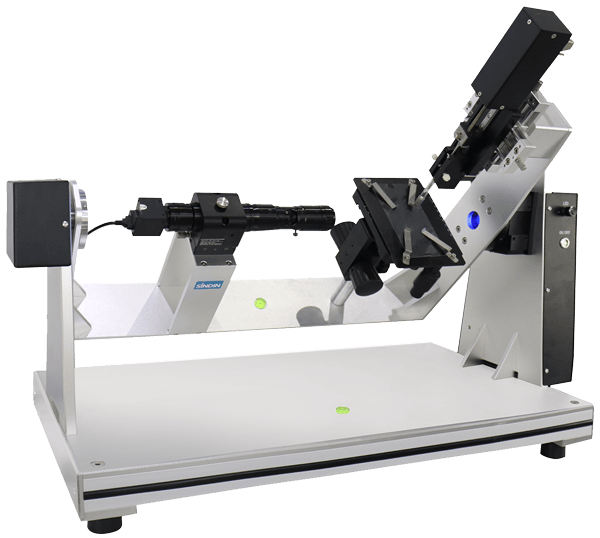
Fully Automatic Inclinometer
- Product Number:LD-JC4
- Product Difference:Fully automatic liquid filling system and automatic tilt mechanism, offering comprehensive functionality and high cost-effectiveness to meet all routine measurement requirements
Product Introduction
The contact angle refers to the angle θ formed between the tangent line to the gas-liquid interface at the triple point of gas, liquid, and solid, and the solid-liquid boundary line on the liquid side. Contact angle measurement is the primary method for surface property testing today.
The integrated tilt-type contact angle meter employs optical imaging principles to measure sample surface contact angle, wetting properties, interfacial tension, surface energy, rolling angle (slip angle), advance/reverse angles, and hysteresis. Equipped with a fully automatic liquid dispensing system and integrated tilt mechanism, this versatile instrument offers high cost-effectiveness to meet diverse routine measurement needs. It is currently widely adopted in numerous universities, research institutes, and enterprises.
Fully automatic tilt angle measuring instruments are extensively applied across industries including mobile phone manufacturing, glass production, surface treatment, materials research, chemical engineering, semiconductor fabrication, coatings and inks, electronic circuits, textile fibers, and medical/biological fields. Contact angle measurement has become a crucial instrument for evaluating surface properties. (Some testing functions require optional accessories.)
1. Measurement of static contact angles via the sessile drop method to study wetting behaviors such as spreading, penetration, and absorption of liquids on solid surfaces.
2. Measurement of advance angle, retreat angle, contact angle hysteresis, rolling angle, and dynamic contact angle on solid surfaces.
3. Continuous real-time analysis and process recording of absorption materials, including time-dependent contact angle curve analysis.
4. Contact angle measurement for various specialty materials such as powders, curved surfaces, and superhydrophobic/superhydrophilic samples.
5. Contact angle testing of materials immersed in liquids using the attached drop method.
6. Measurement of surface tension and its polar and dispersive components for various liquids using the hanging drop method.
7. Calculation of solid surface free energy and analysis of its polar and dispersive components.
8. Analysis of liquid adhesion work on solid surfaces to evaluate surface uniformity, cleanliness, and other properties.
The contact angle measuring instrument primarily consists of six major components: light source, injection unit, sample stage, acquisition system, integrated tilting platform, and analysis software. The device operates based on optical imaging principles.
① The light source employs a dense LED cold light design, ensuring uniform illumination, clear images, and extended lifespan.
② The injection unit utilizes a high-precision syringe pump for liquid delivery, controlled by software for quantitative and constant-speed operation, delivering stable droplets with exceptional accuracy.
③ The sample stage employs a three-dimensional manual precision adjustment platform, offering flexible operation and accurate positioning. The stage can be customized to fit actual sample dimensions.
④ The acquisition system utilizes an imported monochrome CCD camera, ensuring stable capture, clear images, and reliable results. The lens features German industrial-grade imported components with adjustable magnification from 0.7x to 4.5x, delivering distortion-free imaging.
⑤ The integrated tilt stage employs software-controlled high-precision inclination with accuracy up to 0.01°.
⑥ The analysis software offers powerful functionality, featuring one-click fully automated fitting capabilities. It incorporates internationally leading fitting methods to achieve precise fitting for diverse droplet morphologies.
Product Features
The main unit features a high-strength aerospace aluminum alloy structure combined with a modular design concept. It employs an independently developed integrated chip circuit control system and incorporates the design essence and configuration of internationally leading imported contact angle equipment, ensuring exceptional instrument stability.
Features an industrial-grade, densely adjustable LED cold light source system (lifespan exceeding 25,000 hours) for clearer imaging while preventing small droplet evaporation caused by excess heat.
Incorporates a high-performance, Japanese-made industrial motor and industrial-grade telecentric zoom lens, achieving virtually distortion-free images for optimal imaging performance.
Features a USB 2.0 standard interface for rapid data transfer, high compatibility, and stable imaging performance.
As China's first provider of German-imported contact angle calibration standards, it ensures instrument precision with angle calibration plates at 3°, 5°, 8°, 60°, 90°, 120°, and 115° (optional).
The flexible acquisition system design accommodates most measurement environments, easily handling complex sample surface measurements.
Features globally advanced contact angle analysis methods for precise fitting of all droplet imaging types, including proprietary differential ellipse and differential circle methods for specialized liquid imaging.
Utilizing internationally leading computational methods, the software achieves fully automated fitting to eliminate human-induced measurement errors.
Features rapid bilateral contact angle measurement and fitting capabilities, enabling comprehensive analysis of liquid-solid surface wetting properties and precise assessment of actual surface wetting conditions.
Dynamic imaging and video-based rapid testing capture continuous contact angle variations, with software performing automated batch fitting.
The software automatically generates reports in multiple formats, including Word, Excel, and graphical spectrum formats.
With various optional accessories available, our robust R&D team can meet diverse custom measurement requirements proposed by clients.
Features forward and backward angle measurement capabilities for efficiently assessing sample surface stability.
Includes rolling angle measurement functionality, intelligently identifying material surface slip points and enabling forward/backward angle measurements through this method.
Product parameters
| Contact Angle Main Unit | |
| Dimensions | 750mm (L) × 408mm (W) × 695mm (Height) |
| Weight | 30.5KG |
| Power Supply | 220V / 60Hz |
| Light Source System | |
| Light Source | High-density LED adjustable blue-toned industrial-grade cold light source |
| Lifespan | Service life exceeding 25,000 hours |
| Injection Unit | |
| Syringe | Dedicated high-precision quartz syringe, 500μL capacity |
| Droplet Volume | Software-controlled automatic liquid delivery, precision up to 0.01μL |
| Injection Unit Movement | Vertical: 50mm; 50mm left-right travel |
| Imaging System | |
| CCD | Genuine imported SONY high-speed industrial-grade chip, 25 frames/s, 130W pixels |
| Lens | 0.7-4.5x HD industrial-grade continuous zoom microscope |
| Acquisition System Adjustment | 100mm front-to-back (3mm fine adjustment), adjustable viewing angle (for multiple perspectives including level view, downward view, and 360° rotation) |
| Stage Assembly | |
| Stage Dimensions | 120mm*150mm |
| Maximum Sample Size | 6 inches |
| Stage Movement | Manual front-back movement, travel 60mm, accuracy ±0.1mm Manual lateral movement, travel 35mm, accuracy ±0.1mm Manual vertical movement, travel 80mm, accuracy ±0.1mm |
| Integrated Tilting Stage | Tilt range ±90°, tilt accuracy ±0.01°, Adjustable Tilt Rate |
| Analysis Software | |
| Contact Angle Measurement Range | 0-180 ° |
| Contact Angle Measurement Accuracy | ±0.1 ° |
| Interfacial Tension Measurement Range | 0-2000 mN/m |
| Interfacial Tension Measurement Accuracy | 0.01 mN/m |
| Analysis Software Features | 1. Domestically advanced contact angle measurement analysis software with automatic fitting method (one-click automatic fitting, eliminating manual error) including: ① Circle method fitting; ② Ellipse/Oblique ellipse fitting method; ③ LY method; ④ Differential circle/Differential ellipse method 2. Dynamic contact angle fitting (batch fitting of multiple images) including: Wettability Testing, Video Analysis 3. Surface Energy Calculation 4. Forward and Backward Angle Measurement 5. Rolling angle measurement 6. Surface tension measurement 7. Adhesion work |

 +86 19353291814
+86 19353291814
 +86 19353291814
+86 19353291814
